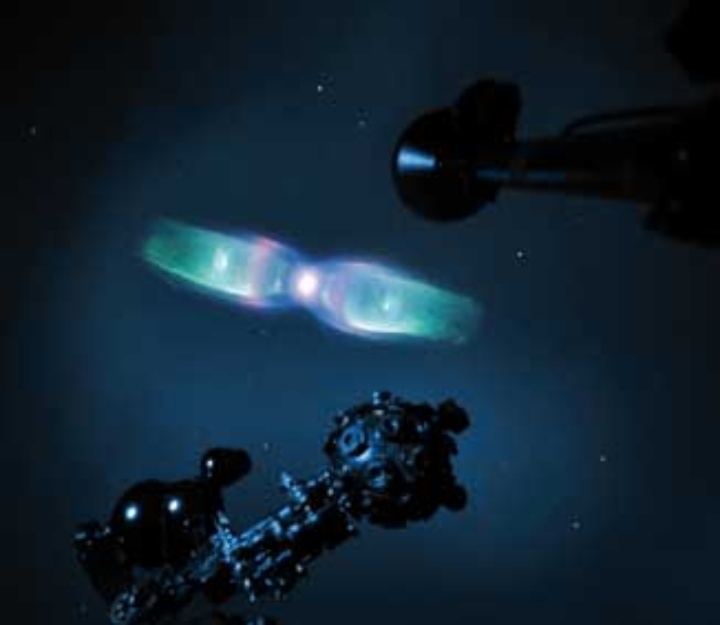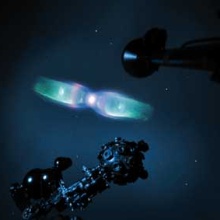Researchers at the University of Stuttgart and at the Technical University of Braunschweig have jointly developed a new programme which reconstructs an interactive 3D model from a telescope recording of a planetary nebulae. This enables its resolution to be increased significantly compared with current procedures and the quality improved enormously. The generated images have now been recorded in the catalogue of a planetary technology company and will soon be able to be admired in planetariums all over the world.
The life of a star can sometimes last for several billion years. Stars corresponding to the size
of our sun accordingly emit a mantel comprising gas and plasma. Brightly coloured, shapely, partly
illuminating clouds are formed – so-called planetary nebulae. Their fascinating appearance makes
them interesting for astronauts as well as for a wide audience; they are popular items to be
presented in planetariums and documentations.
Automatically generating high resolution 3D models
Photos of this astronomical phenomenon are recorded by high-performance telescopes. Due to
the immense distances between the nebulae and the earth, however, these only enable observations
from one single perspective. In order to find out more about their special shape and structure,
three-dimensional models are required.
Three years ago a team of researchers from the Technical University of Braunschweig developed
an algorithm which reconstructed a 3D model from one single telescope image. They used the optical
and symmetrical features of the nebulae in order to fill in lacking information from other
perspectives. In other words: an interactive object was generated through a virtual computer
tomography. Since astronomical nebulae are not exactly symmetrical, details corresponding to the
photos were subsequently adapted. ”Using this method for the first time it was possible to create
scientifically sound 3D images; however, in view of their size and quality they were not yet
suitable for large scale illustrations“, explained Marcus Magnor, Professor at the Institute of
Computer Graphics in Braunschweig.
Now a new procedure has been developed in cooperation with the University of Stuttgart which
has improved the presentation and resolution of the reconstructed nebulae enormously. Daniel
Weiskopf, Professor at the Visualisation Institute, is satisfied with the result: “The resolution
of the 3D models was able to be substantially increased and consequently now almost reaches the
quality of the underlying “telescope images.“ The calculation requires parallel image generation
and reconstruction on a cluster computer, as is available at the Stuttgart Institute. It requires
around twelve hours to reconstruct one single nebula in high density.
Use in planetariums and in space research
Now nothing stands in the way of a presentation in modern digital planetariums. The Flensburg
Planetarium became aware of the further development and expressed great interest. In the meantime
Evans & Sutherland, an American manufacturing company for planetary technology, has integrated
the three-dimensional nebulae in its software. With this they will shortly be available for
planetariums worldwide and will be able to be admired by the visitors to their presentations.
The further development also offers astronauts better insights. The high resolution space
views enable new findings when investigating these interesting objects in our universe.
Further information from Tina Barthelmes, University of Stuttgart, Visualisation
Institute, tel. 0711/685-88604, email: tina.barthelmes(at)visus.uni-stuttgart.de,
www.visus.uni-stuttgart.de
The original publication, published in October 2012:
Stephan Wenger, Marco Ament, Stefan Guthe, Dirk Lorenz, Andreas Tillmann, Daniel Weiskopf,
Marcus Magnor: Visualization of Astronomical Nebulae via Distributed Multi-GPU Compressed Sensing
Tomography. IEEE Transactions on Visualization and Computer Graphics 18 (12).



